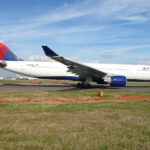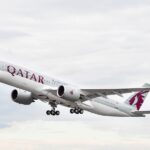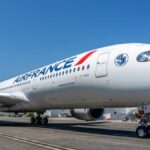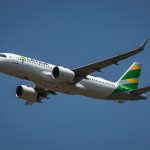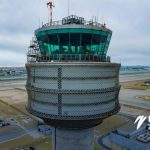On Monday, June 12, Boeing and NASA announced that the aircraft produced under the agency’s Sustainable Flight Demonstrator project has been designated as the X-66A by the United States Air Force, which grants «X-plane» status to development programmes aimed at creating revolutionary configurations.
These are usually intended to test designs and technologies that can be adopted in future aircraft models, rather than serving as prototypes for mass production.
The goal of the programme is to provide information for future designs and advancements in aerodynamics and energy efficiency. With that objective in mind, Boeing and NASA revealed in January that they would collaborate to study a new wing concept for more efficient and sustainable commercial airplanes.
See also: NASA selects Blue Origin, Jeff Bezos’ space company, to take astronauts to the moon
The X-66A, developed by Boeing and NASA
«The X-66A is the X-plane specifically aimed at helping the United States achieve the goal of net-zero greenhouse gas emissions by 2050», NASA stated in a press release. Boeing will participate in its development and collaborate on modifying a McDonnell Douglas MD-90, which will include a shortened fuselage and the replacement of its wings and engines.
The aerospace manufacturer presented the resulting design, known as the Transonic Truss-Braced Wing (TTBW): it will feature long, slim wings with engines mounted underneath and a set of aerodynamic trusses for support. It will also be responsible for its construction and conducting the initial flight tests.
The new ultra-thin wings, supported by trusses, with increased span and aspect ratio, will be able to accommodate advanced propulsion systems that are limited by the lack of space under the wings in current low-wing aircraft configurations. Boeing will utilize elements from existing aircraft and integrate them with completely new components.
According to the agreement between the two parties, NASA will invest 425 million dollars over a seven-year period, while Boeing and its subsidiaries will contribute the remaining funding, estimated at around 725 million.
See also: Farewell to the SOFIA era: NASA’s Boeing 747SP finds a new home
A future concept for more sustainable single-aisle aircraft?
According to the American space agency, this new development, which is the latest in a series of experimental aircraft, aims to be an innovative concept for «a potential new generation of more sustainable single-aisle aircraft, the workhorse of passenger airlines around the world».
In this regard, such a design would allow for a reduction in greenhouse gas emissions of up to 30% compared to the most efficient narrow-body aircraft currently in operation.
«The X-66A will help shape the future of aviation, a new era where aircraft are greener, cleaner and quieter, and create new possibilities for the flying public and American industry alike», said NASA Administrator Bill Nelson.
«We are incredibly proud of this designation, because it means that the X-66A will be the next in a long line of experimental aircraft used to validate breakthrough designs that have transformed aviation», said Todd Citron, Boeing’s Chief Technology Officer.
«With the learnings gained from design, construction and flight-testing, we will have an opportunity to shape the future of flight and contribute to the decarbonization of aerospace», Citron added.





